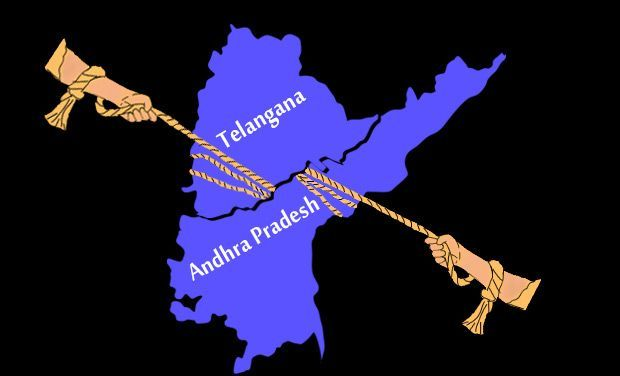Description

Copyright infringement not intended
About:
- In 2014, the Andhra Pradesh Reorganisation Act of 2014, commonly known as the Telangana Act, bifurcated Andhra Pradesh into Telangana and the residuary Andhra Pradesh state, but still, the division of assets and liabilities between the two States remain elusive as both States make their interpretation of the provisions under the Andhra Pradesh Reorganisation Act 2014.
- Several bilateral meetings between the two States as well as those convened by the Union Home Ministry failed.
- Now the State government of Andhra Pradesh has approached the Supreme Court to seek “just, reasonable and equitable apportionment” of assets and liabilities.
Assets to be divided:
- There are 91 institutions under Schedule IX and 142 institutions under Schedule X of the Andhra Pradesh Reorganisation Act 2014.
- The division of another 12 institutions not mentioned in the Act has also become a controversial point between the two States.
- The overall dispute involves 245 institutions with a total fixed asset value of ₹1.42 lakh crore.
Stand of Andhra Pradesh Government:
- The Andhra Government is asking for the implementation of the recommendations given by the Sheela Bhide expert committee for the bifurcation of 89 out of the 91 Schedule IX institutions.
- The Andhra Pradesh Government highlighted that the recommendations of the expert committee need to be accepted to expedite the process of division of these institutions.
.jpeg)
Sheela Bhide expert committee:
- The committee has recommended the division of 89 out of the 91 Schedule IX institutions.
- It was criticized by the Telangana government which said it is against the spirit of the Reorganisation Act.
Stand of Telangana Government:
- The state government of Telangana stated that the expert committee’s recommendations were against the interests of Telangana.
Role of the Union Government:
- The 2014 Act empowers the Union Government to intervene as and when needed. The Home Ministry taking steps to expeditiously and amicably settle the issues between the two States.
- The Union Home Ministry headed several meetings with the Chief Secretaries of the two States to resolve the matter.

Way Forward:
- Interstate disputes can be resolved by the states themselves or by the Centre through dialogue and political settlements.
- The Union Government can work as a facilitator or a neutral mediator.
- The Parliament can bring a law to resolve disputes between states.
- Disputes can also be settled by the Supreme Court in its original jurisdiction. Article 131 of the Indian Constitution says “Subject to the provisions of this Constitution, the Supreme Court shall, to the exclusion of any other court, have original jurisdiction in any dispute;
- Between the Government of India and one or more States.
- Between the Government of India and any State or States on one side and one or more other States on the other.
- Between two or more States.
- Article 263 of the Constitution gives powers to the President to set up an Inter-state Council for the resolution of disputes between states.
- Inter-state disputes need to be settled quickly and impartially otherwise they become festering sores that create friction, prevent development, give a perverse direction to the energies of people and governments and generate hard feelings on all sides.
https://epaper.thehindu.com/Home/ShareArticle?OrgId=GKTAO4QTM.1&imageview=0











